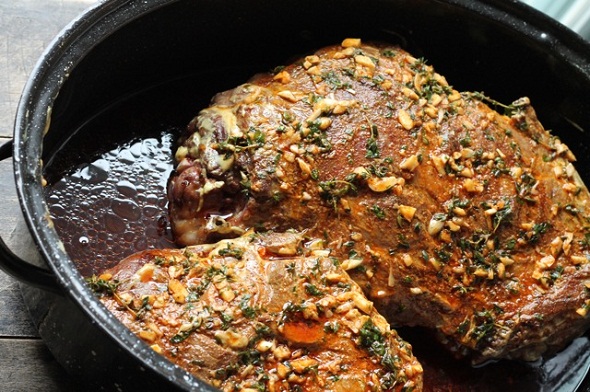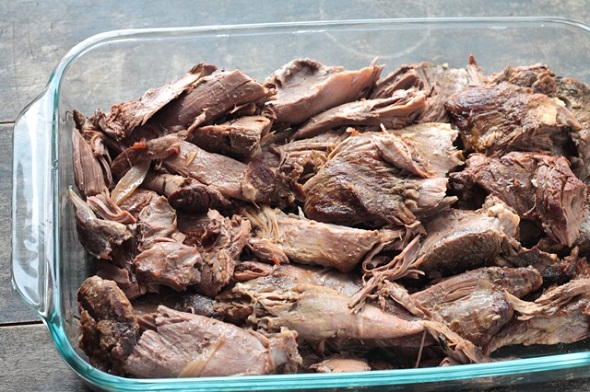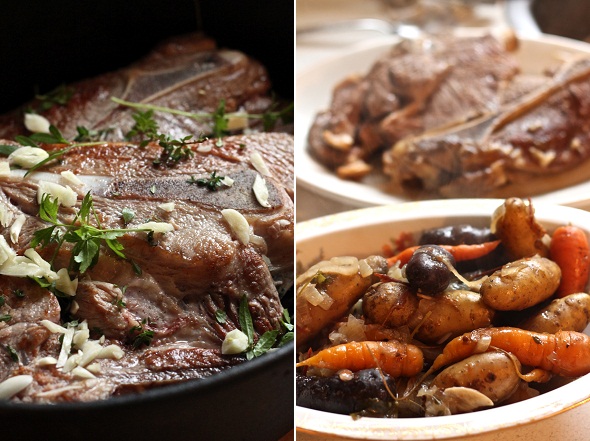 For the past few days we've been working hard to restore our house to its former glory, wriggling around the crawl space and ducking around the attic, sawing, scraping, painting. But we still had time to hit the farmer's market in town for our supply of greens, cheeses, fish, and, on this occasion, some amazing grass-fed beef--blade steaks. The blade steak is not the tenderest of cuts, but it has so much flavor. To cook, slow-braise in beer, garlic, thick tomato sauce, and herbs. And remember the root veg.
For acidity I've used my neighbor's twenty-something-hour tomato sauce. He simmers his tomatoes for that long, adding more every few hours. The result is a thick, deep flavored sauce, akin to rich tomato paste. But any tomato sauce will do for this recipe.
For the past few days we've been working hard to restore our house to its former glory, wriggling around the crawl space and ducking around the attic, sawing, scraping, painting. But we still had time to hit the farmer's market in town for our supply of greens, cheeses, fish, and, on this occasion, some amazing grass-fed beef--blade steaks. The blade steak is not the tenderest of cuts, but it has so much flavor. To cook, slow-braise in beer, garlic, thick tomato sauce, and herbs. And remember the root veg.
For acidity I've used my neighbor's twenty-something-hour tomato sauce. He simmers his tomatoes for that long, adding more every few hours. The result is a thick, deep flavored sauce, akin to rich tomato paste. But any tomato sauce will do for this recipe.
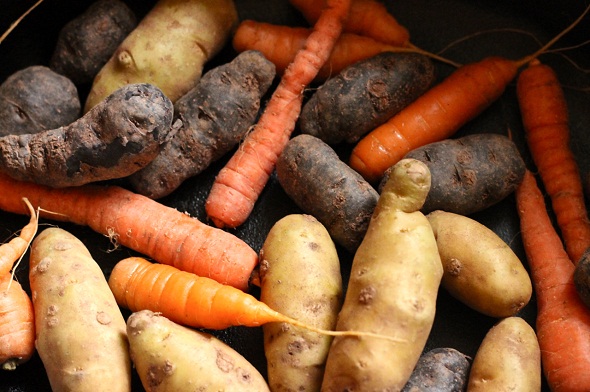
Serves 4
Pot-au-Feu
• 2 (about 20oz each) blade steaks • 1 bottle of beer • 4 cloves garlic, finely chopped • 2 sprigs thyme • a small bunch of parsley • 1 cup tomato sauce • varieties of veggies - fingerling potatoes, baby carrots, sliced onions • salt + ground black pepper
In a large skillet, heat a few tablespoons of oil and sear the steaks on both sides. Season with salt and pepper. Put all the ingredients including the steaks in a large cast iron pot. Add water (or stock) until just covered. Simmer on a back burner on low heat for at least 4 hours. Reserve the meat and vegetables and reduce the liquid by half (~15-20 minutes) then whisk in 1 tablespoon of butter mixed with 1 tablespoon of flour. Transfer each serving of meat and veggies to a shallow bowl, pour sauce overtop. Enjoy with crusty bread.
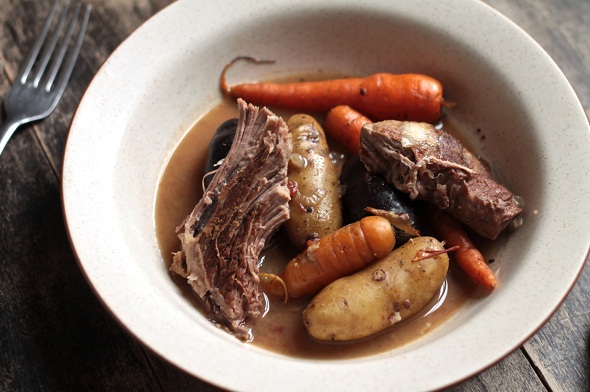

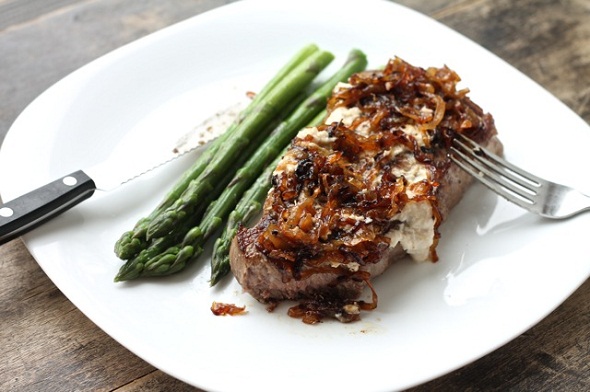 I don't eat beef often, but when I do I like it to be a thick, juicy steak that's packed with flavor and served with a couple of buttered veggies. Caramelized onions are a great topping for steak. They are so versatile and adaptable. Sweat them, grill them, brown them... they can be found in a wide range of recipes. Onions are cooked so often here that we have a running joke about it. "Mmmm, something smells good..."
Just how sauteeing onions can turn the ham-handed novice into a fantastic cook, marinating your meat can turn a cheap cut into something quite delicious. Marinating adds flavor but also acts as a tenderizer. Here, the acidity in the wine will tenderize the meat by breaking up the bonds that hold the proteins together, this is also called denaturing.
I don't eat beef often, but when I do I like it to be a thick, juicy steak that's packed with flavor and served with a couple of buttered veggies. Caramelized onions are a great topping for steak. They are so versatile and adaptable. Sweat them, grill them, brown them... they can be found in a wide range of recipes. Onions are cooked so often here that we have a running joke about it. "Mmmm, something smells good..."
Just how sauteeing onions can turn the ham-handed novice into a fantastic cook, marinating your meat can turn a cheap cut into something quite delicious. Marinating adds flavor but also acts as a tenderizer. Here, the acidity in the wine will tenderize the meat by breaking up the bonds that hold the proteins together, this is also called denaturing.
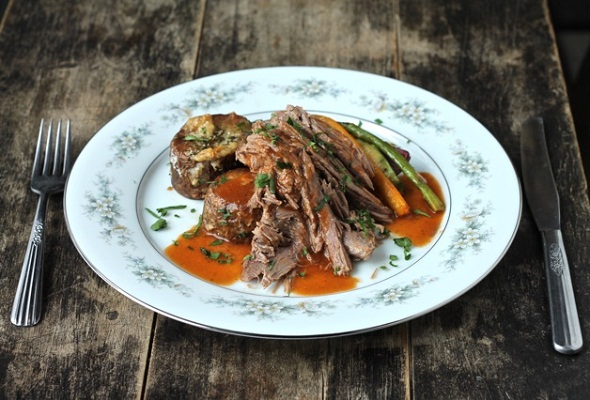 I made a feast for Easter. We ate garlic-parmesan potatoes, honey-whiskey carrots, barbecue-grilled veggies, homemade bread, a fall-apart leg of lamb, and a couple of salads. I barbecued the lamb on very high heat, mainly to brown the surfaces but also to give it a smoky taste. I did this a day in advance, and I would recommend giving yourself a similar head start. If you're the last minute type, just start early morning on serving day. The size of the leg does not really matter, but you'll have to reduce the cooking time a bit if you don't have a whole leg to, say, 6-7 hours. You'll know it's finished when it comes straight off the bone.
You can use this
I made a feast for Easter. We ate garlic-parmesan potatoes, honey-whiskey carrots, barbecue-grilled veggies, homemade bread, a fall-apart leg of lamb, and a couple of salads. I barbecued the lamb on very high heat, mainly to brown the surfaces but also to give it a smoky taste. I did this a day in advance, and I would recommend giving yourself a similar head start. If you're the last minute type, just start early morning on serving day. The size of the leg does not really matter, but you'll have to reduce the cooking time a bit if you don't have a whole leg to, say, 6-7 hours. You'll know it's finished when it comes straight off the bone.
You can use this 